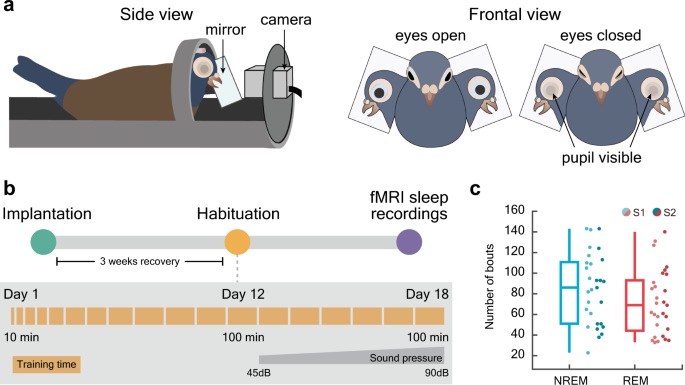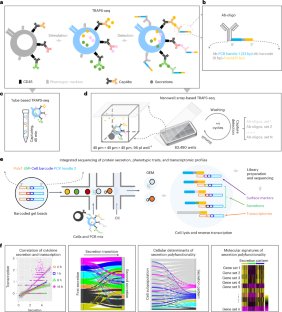鳥類は人間と驚くほどよく似た睡眠パターンを示し、夢の中で飛行を体験することがある Birds show remarkably similar sleep patterns to humans and may experience flight in their dreams
2023-06-05 マックス・プランク研究所
◆また、鳥の夢には感情が関与している可能性も示唆されました。一方、非REM睡眠中には脳脊髄液の流れが増加し、廃棄物の除去に役立つとされています。しかし、REM睡眠中は血液の流れが増えるため、脳脊髄液の流れが減少することもわかりました。
◆今後の研究では、REM睡眠の廃棄物の除去への影響や、鳥の夢の内容についてさらに詳しく調査される予定です。
<関連情報>
- https://www.mpg.de/20427234/0605-orni-when-pigeons-dream-154562-x?c=12034828
- https://www.nature.com/articles/s41467-023-38669-1
鳥類のレム睡眠時に脳が広範囲に活性化し、脳脊髄液の流れが低下することが判明 Wide-spread brain activation and reduced CSF flow during avian REM sleep
Gianina Ungurean,Mehdi Behroozi,Leonard Böger,Xavier Helluy,Paul-Antoine Libourel,Onur Güntürkün & Niels C. Rattenborg
Nature Communications Published:05 June 2023
DOI:https://doi.org/10.1038/s41467-023-38669-1

Abstract
Mammalian sleep has been implicated in maintaining a healthy extracellular environment in the brain. During wakefulness, neuronal activity leads to the accumulation of toxic proteins, which the glymphatic system is thought to clear by flushing cerebral spinal fluid (CSF) through the brain. In mice, this process occurs during non-rapid eye movement (NREM) sleep. In humans, ventricular CSF flow has also been shown to increase during NREM sleep, as visualized using functional magnetic resonance imaging (fMRI). The link between sleep and CSF flow has not been studied in birds before. Using fMRI of naturally sleeping pigeons, we show that REM sleep, a paradoxical state with wake-like brain activity, is accompanied by the activation of brain regions involved in processing visual information, including optic flow during flight. We further demonstrate that ventricular CSF flow increases during NREM sleep, relative to wakefulness, but drops sharply during REM sleep. Consequently, functions linked to brain activation during REM sleep might come at the expense of waste clearance during NREM sleep.


